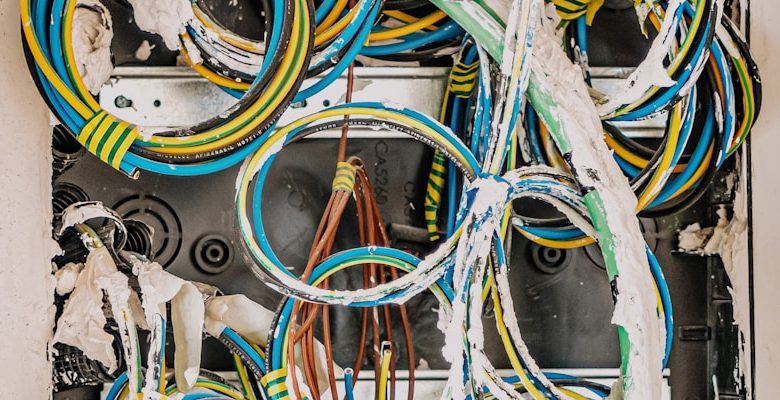How to Use Hardware Wallets for Enhanced Security

- How hardware wallets provide an extra layer of security for your cryptocurrencies
- Setting up your hardware wallet: A step-by-step guide
- The benefits of using hardware wallets over software wallets
- Protecting your digital assets with hardware wallets
- Common misconceptions about hardware wallets debunked
- Tips for safely storing and using your hardware wallet
How hardware wallets provide an extra layer of security for your cryptocurrencies
Hardware wallets offer an additional layer of security for your cryptocurrencies by keeping your private keys offline, away from potential hackers and malware. This means that even if your computer or mobile device is compromised, your funds will remain safe in your hardware wallet.
When you make a transaction with a hardware wallet, the device signs the transaction internally, ensuring that your private key never leaves the device. This eliminates the risk of your key being exposed during the transaction process, providing peace of mind for cryptocurrency holders.
Furthermore, hardware wallets are typically protected by a PIN code or password, adding another level of security in case the device is lost or stolen. Some models even come with additional security features, such as biometric authentication or passphrase support, for enhanced protection.
Overall, hardware wallets are a reliable and secure way to store your cryptocurrencies, giving you full control over your funds while keeping them safe from potential threats in the digital world.
Setting up your hardware wallet: A step-by-step guide
To set up your hardware wallet, follow these step-by-step instructions to ensure a smooth and secure process. First, unpack your hardware wallet and all included accessories. Connect the device to your computer using the provided USB cable.
Next, navigate to the official website of the hardware wallet manufacturer, where you will find the necessary software for setting up your device. Download and install the software on your computer. Once the software is installed, open it and follow the on-screen instructions to create a new wallet.
During the setup process, you will be prompted to write down your recovery phrase. This is a crucial step, as it will allow you to recover your funds if your hardware wallet is lost or damaged. Write down the recovery phrase on the provided card and store it in a safe place.
After setting up your wallet and recording your recovery phrase, you will be ready to transfer funds to your hardware wallet for added security. Follow the instructions provided by the software to transfer your cryptocurrency to your new wallet address.
Once your funds are transferred, disconnect your hardware wallet from your computer and store it in a secure location. Your hardware wallet is now set up and ready to use for enhanced security of your cryptocurrency assets.
The benefits of using hardware wallets over software wallets
There are several advantages to using hardware wallets over software wallets when it comes to securing your cryptocurrency. One of the main benefits is the added layer of security that hardware wallets provide. Because hardware wallets store your private keys offline, they are much less vulnerable to hacking and other cyber attacks compared to software wallets.
Furthermore, hardware wallets are immune to computer viruses and malware that can infect software wallets. This makes them a more secure option for storing your digital assets, especially if you are holding a large amount of cryptocurrency. In addition, hardware wallets are often encrypted, adding another level of protection to your funds.
Another advantage of hardware wallets is their ease of use. Many hardware wallets come with user-friendly interfaces that make it simple to send and receive cryptocurrency. Some even have built-in screens that allow you to verify transactions before they are processed, adding an extra layer of security.
Overall, using a hardware wallet can give you peace of mind knowing that your cryptocurrency is secure and protected from potential threats. While software wallets can be convenient for everyday transactions, when it comes to long-term storage and security, hardware wallets are the superior choice.
Protecting your digital assets with hardware wallets
When it comes to protecting your digital assets, hardware wallets provide an extra layer of security that is essential in today’s digital age. These wallets are physical devices that store the private keys necessary to access your cryptocurrency securely offline. This makes them immune to online hacking attempts and malware attacks that can compromise your funds.
By using a hardware wallet, you can keep your digital assets safe from potential threats such as phishing scams, ransomware, and other malicious activities. These devices are designed to be tamper-proof, meaning that even if they are lost or stolen, your funds will still be protected. Additionally, hardware wallets are easy to use and offer a user-friendly interface for managing your cryptocurrency holdings.
It is important to choose a reputable hardware wallet from a trusted manufacturer to ensure the security of your digital assets. Popular options include Ledger Nano S, Trezor, and KeepKey. Once you have purchased a hardware wallet, make sure to set it up following the manufacturer’s instructions carefully. Remember to keep your recovery seed phrase in a safe place, as this is the only way to restore access to your funds in case your hardware wallet is lost or damaged.
Common misconceptions about hardware wallets debunked
There are several common misconceptions about hardware wallets that need to be debunked in order to fully understand their benefits and how to use them effectively. Let’s address some of the most prevalent myths:
- Myth: Hardware wallets are complicated to use and only for tech-savvy individuals.
Reality: While hardware wallets may seem intimidating at first, they are designed to be user-friendly and accessible to individuals of all technical levels. Most hardware wallets come with clear instructions and intuitive interfaces to guide users through the setup process.
- Myth: Hardware wallets are not secure because they can still be hacked.
Reality: Hardware wallets are considered to be one of the most secure ways to store cryptocurrency. They are offline devices, meaning they are not connected to the internet and are therefore less vulnerable to hacking attempts. Additionally, hardware wallets use advanced encryption techniques to protect your private keys.
- Myth: Hardware wallets are expensive and not worth the investment.
Reality: While it’s true that hardware wallets have an upfront cost, the added security and peace of mind they provide make them a worthwhile investment for anyone looking to protect their cryptocurrency holdings. The cost of a hardware wallet is minimal compared to the potential losses from a security breach.
- Myth: Hardware wallets are not necessary if you use a secure software wallet.
Reality: Software wallets, while convenient, are still vulnerable to hacking and malware attacks. Hardware wallets offer an extra layer of security by keeping your private keys offline and out of reach of potential threats. It’s always better to err on the side of caution when it comes to protecting your assets.
Tips for safely storing and using your hardware wallet
When it comes to safely storing and using your hardware wallet, there are a few important tips to keep in mind. By following these guidelines, you can ensure that your cryptocurrency is secure and protected from potential threats.
- Always keep your hardware wallet in a safe and secure location, such as a locked safe or safety deposit box. This will help prevent theft or loss of your device.
- Make sure to regularly update the firmware on your hardware wallet to protect against any security vulnerabilities that may be discovered over time.
- When setting up your hardware wallet, make sure to follow the manufacturer’s instructions carefully to ensure that it is properly configured and secured.
- Never share your recovery seed phrase with anyone else, as this could allow them to access your cryptocurrency funds. Keep this information in a secure and private location.
- Use a strong and unique PIN code to lock your hardware wallet when it is not in use. Avoid using easily guessable numbers or codes that could be easily compromised.
By following these tips, you can help ensure that your hardware wallet is used safely and securely, providing you with enhanced security for your cryptocurrency investments.



